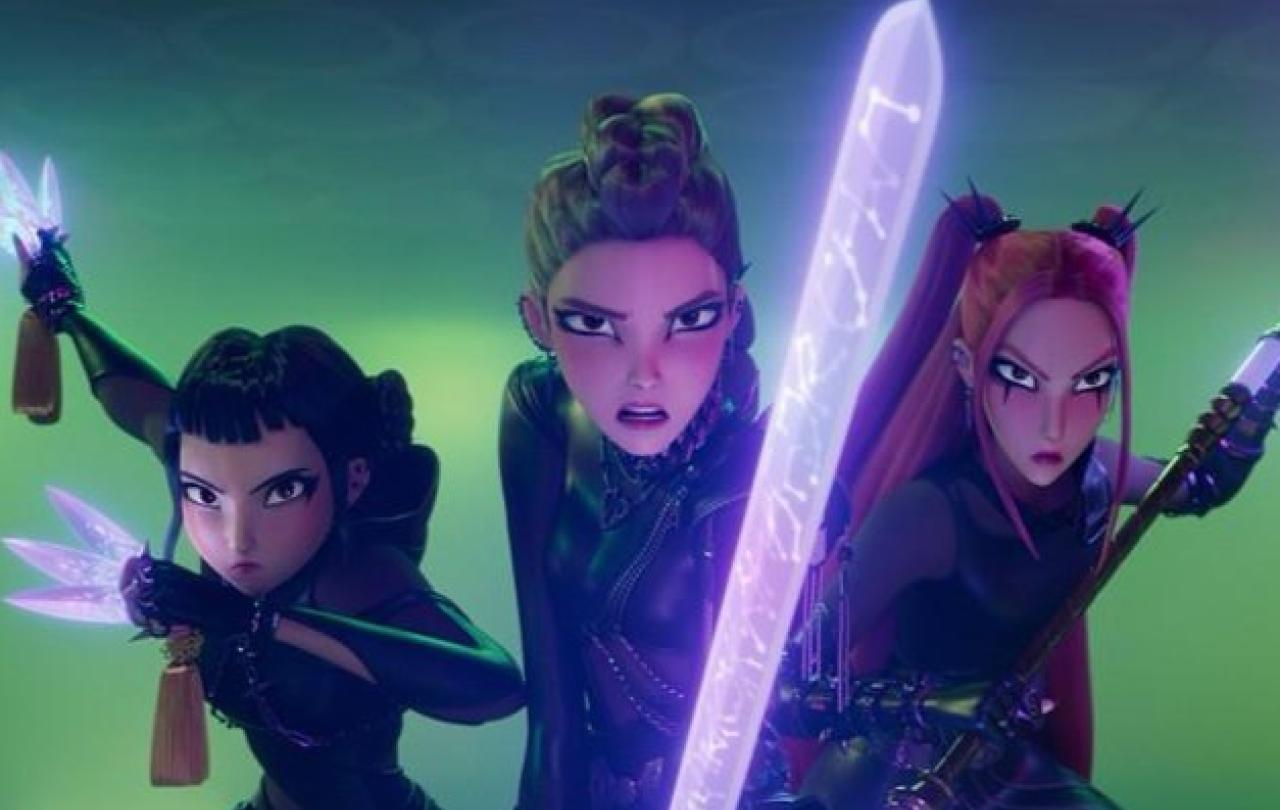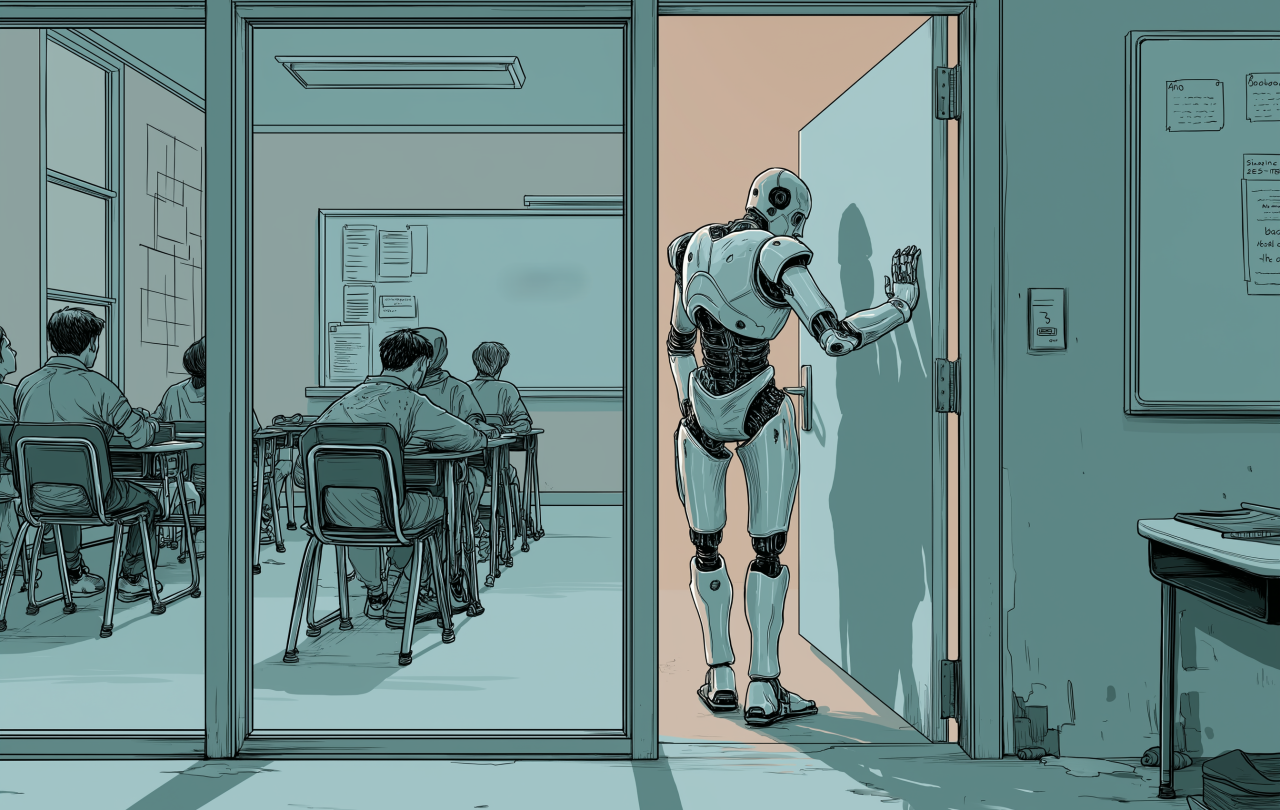
I am not the target demographic for the hit film K-Pop Demon Hunters. My knowledge of K-pop is incredibly limited, and I’m pretty apathetic about musicals. In fact, my only real encounter with K-pop was as a youth worker, where I distinctly remember its first ‘wave.’ Suddenly, groups of mostly teenage girls were eager to tell me all about BTS, a boy band that rose to popularity the late 2010s. Their dancing was impeccably choreographed, their lyrics a mix of English and Korean; for as much as it wasn’t my thing, I got the appeal. International media finding a place within the British zeitgeist has happened before. I’m of the generation where Pokémon did an excellent job of distracting me from learning my times tables. Yet, the seven very handsome boys that made up BTS seemed to cast a spell over my young people like I’d never seen.
Flash forward seven years. Much has changed. A global pandemic is in the rear-view mirror, and I’m trying to find my place in the north-east of Scotland. I’m sitting in the car trying to simply transport my two wonderful daughters from Point A to Point B. Many parents will know of the strange hypnotic effects of children’s songs in the car. A fifteen-year-old Harry would be mortified to know that Metallica no longer feature in the top spots of my Spotify most-played artists. Now, upon that throne sits an assortment of Disney Princesses, and they rule with an iron fist. Today is different, however. “What do you want on today?” I ask, ready for that day’s third rendition of ‘Let it Go.’ “K-Bop Bear Hunters”, replies my youngest eagerly.
Here, my daughter is trying her best to remember the name of a song she’s heard at gym class. I work it out eventually, K-Pop Demon Hunters, amused by the swapping out of ‘Demon’ for ‘Bear.’ My wife puts it on, and to my pleasant surprise, the songs are like a breath of fresh air. I read a bit about K-Pop Demon Hunters, working out that it’s an animated film on Netflix, and I get the general gist. However, I’m surprised to hear that it’s recently become the streamer’s most-watched film ever. My wife and I decide to watch it together that night, and I’m blown away. I’m seriously not the target demographic for this film, yet it has me completely hooked.
The film follows the three members of a K-pop girl group, Huntr/x (pronounced hun-tricks). We quickly learn that Rumi, Mira, and Zoey, use the power of music to fight off demons, many of which are based on real Korean mythology. Their singing empowers a magic barrier, the Honmoon, that keeps the demons at bay; yet, trouble emerges when a demonic boy band arrives seeking to stop Huntr/x and allow demons to take over the world. High jinks ensue, there are some cracking songs, and, of course, a surprise romantic subplot.
As the film ends, I find myself left with an unusual feeling. Ever since I was told as a boy that the big lion in Narnia was really Jesus, I’ve been intrigued by stories that tell me something of faith. Now, to be clear, I do not think the writers of K-Pop Demon Hunters set out to create a story about Christian faith; it would be very naïve and quite inappropriate to suggest a film so heavily inspired by Korean culture was actually about Western Christian values the whole time. However, I am still personally challenged by the themes it brings up, especially considering the film’s emphasis on belonging, togetherness, and authenticity.
‘What It Sounds Like’
Rumi, our protagonist for this story, hides a secret, a secret which propels the events of the film. It is established early on that you can tell a demon in disguise by the intricate patterns on their arms; sharp tattoo-like symbols that resemble lightning bolts coursing across their bodies. As Rumi gets to the bridge of the song ‘Golden,’ we see her looking at herself in the mirror. The sleeves of her jacket sloping off her shoulders to reveal that she too holds these patterns; Rumi is part demon. This all happens in the first few opening scenes of the film. The audience holds onto this secret alongside Rumi as she tries to hide these patterns from her bandmates. She believes that her job is important, crucial even. The Honmoon must be protected; the barrier to the demon world must be strong. However, Rumi’s secret becomes a thorn in her side, risking their mission. This was where I saw the potential of the story roll out in front of me. What started as a colourful, poppy, sickly-sweet kids film developed into a tale that demonstrates the power of friendship, community, and love. To try and illustrate this more clearly, I want to pick up on some of the lyrics from the song sung at the film’s climax, ‘What It Sounds Like,’ tracing Rumi’s journey as she deals with the secret she hides.
If ‘Golden’ was to set the stage, illustrating the juxtaposition between the song’s words and Rumi's insecurities, then ‘What It Sounds Like’ is the fulfilment of Rumi’s wish. Whilst Rumi originally sang of a duty that provided her strength, “cause we are hunters, voices strong and I know I believe,” now she recognises that she relies on her friends to go her through, “I don’t know why I didn’t trust you to be on my side.” The suspicion Rumi holds that her friend won’t understand the quite literal patterns she hides has only led to division; now, through the authenticity she has learnt to value, through the support of her friends who cast away their prejudices, a new reality is found where Rumi no longer holds shame for who she is.
I am not surprised at all to hear that queer writers have acknowledged the allegory for the shame many queer people hold around coming out. Needing to hide a part of herself, Rumi demonstrates the philosophical cornerstone that has caused this story to resonate with queer folk. This is most potent at the crescendo of ‘What It Sounds Like,’ where all three girls come together and sing as one, “why did I cover up the colours stuck inside my head? I should’ve let the jagged edges meet the light instead.” What I believe is demonstrated here is a rejection of the thin understanding that ‘Golden’ prioritised. Originally, these bandmates came together because of a responsibility that has been placed on them; demons are bad, get rid of them. Now, a more nuanced reality emerges. As the light spills out of them, meeting these “jagged edges” of life like a prism, the world no longer seems as black and white as they first believed. Rumi, being part demon, is not in conflict with their desire to love each other.
Carrying and caring
Fantasy writing does a good job of using a physical object to represent the philosophy of the story. The One Ring in The Lord of the Rings both represents the burden Frodo carries and is literally the burden he carries. K-Pop Demon Hunters takes a similar approach, just not physically. As Huntr/x sing of the scars they carry, of covering up things they thought would lead to discrimination, they acknowledge that they have “listened to the demons, we let them get between us.” The fight they have is with magical creatures from the underworld, yes. But these demons also represent the division between Rumi and those she cares about. However, this shame is rooted in reality; we see early on that Rumi’s friends probably wouldn’t understand her part-demon heritage. What is needed here isn’t for Rumi to simply rip the plaster off and be honest. The shame she feels might well be internal, but it is still projected upon her by the attitudes of others. Instead, as demonstrated by the lyrics, it is only through a genuine life-giving care for one another that these three friends can come together to conquer darkness.
To summarise, K-Pop Demon Hunters spoke more to me about the human experience of community, friendship, and togetherness than most so-called ‘grown-up’ films have ever managed. I am pleased that a film that, I imagine, my children will watch over and over again holds such a comforting message. Against a backdrop of children's media that only exists to empty my wallet, K-Pop Demon Hunters—against all my assumptions—truly demonstrates the artistic value of animated films. I look forward to the enviable barrage of sequels and copy-cats.
Support Seen & Unseen
Since Spring 2023, our readers have enjoyed over 1,500 articles. All for free.
This is made possible through the generosity of our amazing community of supporters.
If you enjoy Seen & Unseen, would you consider making a gift towards our work?
Do so by joining Behind The Seen. Alongside other benefits, you’ll receive an extra fortnightly email from me sharing my reading and reflections on the ideas that are shaping our times.
Graham Tomlin
Editor-in-Chief





